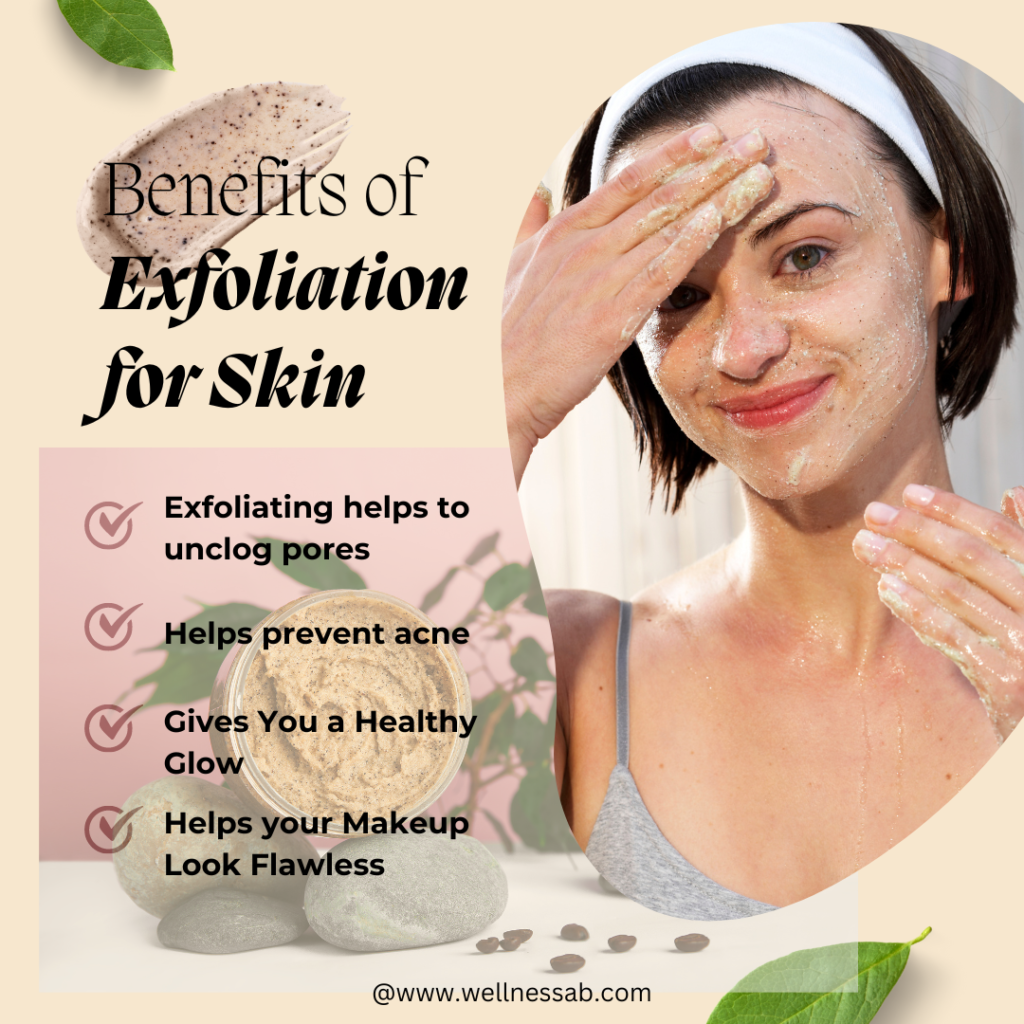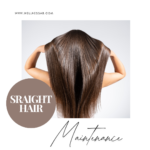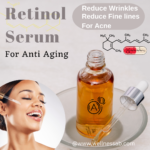
Table of Contents
Introduction
What is Exfoliation?
Exfoliation is the process of removing dead skin cells from the top layer of the skin. This can be achieved through a lot of ways , including physical, chemical, and mechanical means. The practice dates back to ancient civilizations, where people used natural ingredients like sand and pumice stones to achieve smoother skin.
Historical Context of Exfoliation
Historically, exfoliation has been an important component of beauty rituals. Ancient Egyptians used abrasive masks made from alabaster, honey, and sour milk, while the Greeks and Romans utilized sand and pumice stones. These early styles laid the foundation for the sophisticated exfoliation techniques we use today.
Significance of Exfoliation in Modern Skincare
In modern skincare, what you need to know about exfoliation is that it is considered essential for maintaining healthy, radiant skin. It helps in removing dead skin cells, unclogging pores, and promoting the regeneration of new skin cells. Regular exfoliating your skin can prevent acne, improve skin texture, and enhance the effectiveness of skincare products.
Seasonal Skincare Secrets: Achieve Perfect Skin All Year Long
Types and different Exfoliation methods
Physical Exfoliation
Scrubs
This practice involves using granular substances to manually slough off dead skin cells. Scrubs containing ingredients like sugar, salt, and microbeads are popular for their effectiveness. However, it’s important to choose scrubs with gentle particles to avoid skin irritation.
Brushes and Tools
Brushes and tools, such as loofahs and sponges, provide a mechanical way to exfoliate the skin. These tools can enhance the exfoliation process but must be used carefully to prevent over-exfoliation and damage to the skin.
Chemical Exfoliation
AHAs (Alpha Hydroxy Acids)
AHAs, such as glycolic acid and lactic acid, are water-soluble acids derived from fruits and milk. They work by dissolving the bonds between dead skin cells, making them easy to remove. AHAs are particularly effective for dry and sun-damaged skin.
BHAs (Beta Hydroxy Acids)
BHAs, like salicylic acid, are oil-soluble acids that penetrate deep into the pores to remove excess oil and dead skin cells. They are ideal for oily and acne-prone skin due to their ability to unclog pores and reduce inflammation.
Enzymes
Enzyme exfoliants, derived from fruits like papaya and pineapple, gently break down dead skin cells. These are suitable for sensitive skin as they offer a milder alternative to acids and physical scrubs.
Mechanical Exfoliation
Microdermabrasion
Microdermabrasion is a professional exfoliating technique that uses a machine to gently sand the skin, removing the thicker outer layer. It’s effective for treating light scarring, discoloration, and sun damage.
Dermaplaning
Dermaplaning involves using a sterile surgical scalpel to shave off the top layer of dead skin cells and peach fuzz. This technique provides immediate smoothness and enhances product absorption.
Natural Exfoliation
DIY Scrubs
DIY scrubs made from natural ingredients like coffee grounds, sugar, and oatmeal offer a cost-effective and customizable exfoliation option. These scrubs can be tailored to suit different skin types and preferences.
Natural Ingredients
Natural exfoliants, such as honey, yogurt, and fruit enzymes, provide gentle exfoliation while nourishing the skin. These ingredients are often included in DIY recipes for their exfoliating and hydrating properties.
Benefits of Exfoliation
Removal of Dead Skin Cells
Exfoliation effectively removes the buildup of dead skin cells, revealing fresher, more vibrant skin underneath. This process helps to prevent dullness and promotes a healthy glow.
Unclogging Pores
By removing dead skin cells and excess oil, exfoliation helps to unclog pores, reducing the likelihood of blackheads and acne. This is especially beneficial for those with oily and acne-prone skin.
Improving Skin Texture
Regular exfoliation smooths the skin’s surface, improving its texture and tone. This can result in a more even complexion and a reduction in the appearance of fine lines and wrinkles.
Enhancing Product Absorption
Exfoliated skin allows for better absorption of skincare products. Without the barrier of dead skin cells, active ingredients can penetrate deeper, making serums, moisturizers, and treatments more effective.
Promoting Cell Turnover
Exfoliation stimulates cell turnover, encouraging the production of new, healthy skin cells. This process is vital for maintaining youthful-looking skin and can help fade hyperpigmentation and scars over time.
Anti-Aging Effects
Regular exfoliation can have anti-aging benefits by reducing the appearance of fine lines, wrinkles, and age spots. It promotes collagen production, which is essential for maintaining skin elasticity and firmness.
Risks and Precautions
Over-Exfoliation
Over-exfoliating can strip the skin of its natural oils, leading to dryness, irritation, and increased sensitivity. It’s crucial to find a balance and avoid excessive exfoliation.
Skin Sensitivity
Individuals with sensitive skin need to choose gentle exfoliants and limit the frequency of exfoliation to prevent adverse reactions like redness and inflammation.
Chemical Burns
Using high concentrations of chemical exfoliants or leaving them on the skin for too long can cause chemical burns. Always follow product instructions and start with lower concentrations.
Choosing the Right Exfoliant
Selecting the appropriate exfoliant based on skin type and concerns is essential. What works for one person may not work for another, so it’s important to consider individual skin needs.
Frequency of Exfoliation
The frequency of exfoliation should be tailored to skin type and the chosen exfoliant. Generally, 1-3 times per week is recommended, but some individuals may require less frequent exfoliation.
How to Exfoliate Based on Skin Type
Normal Skin
Those with normal skin can use a variety of exfoliants, including scrubs, AHAs, and enzymes. Exfoliating 2-3 times a week is typically sufficient.
Dry Skin
Dry skin benefits from gentle chemical exfoliants like lactic acid and enzyme-based products. Exfoliating once or twice a week can help remove flaky skin without causing irritation.
Oily Skin
Oily skin can tolerate more frequent exfoliation, using BHAs like salicylic acid to unclog pores and reduce excess oil. Exfoliating 2-4 times a week can help keep acne at bay.
Combination Skin
For combination skin, it’s best to use different exfoliants on different areas of the face. AHAs can be used on dry areas, while BHAs can target oily regions. Exfoliating 2-3 times a week is usually effective.
Sensitive Skin
Sensitive skin requires gentle exfoliation with products containing enzymes or very mild AHAs. Exfoliating once a week or every other week can help avoid irritation.
Exfoliation in Different Climates
Exfoliating in Humid Climates
In humid climates, the skin can become oily and clogged. Regular exfoliation with BHAs can help control oil and prevent breakouts. Lightweight, non-comedogenic products are recommended.
Exfoliating in Dry Climates
Dry climates can exacerbate skin dryness, so gentle exfoliation with hydrating AHAs and enzymes is beneficial. Follow up with a rich moisturizer to maintain skin hydration.
Seasonal Exfoliation
Adjusting exfoliation routines with the changing seasons is important. In summer, focus on controlling oil with BHAs, while in winter, switch to hydrating AHAs and richer moisturizers to combat dryness.
Exfoliation for Different Age Groups
Teenagers
Teenagers can benefit from gentle exfoliation to manage acne and oily skin. Salicylic acid and enzyme exfoliants are suitable for this age group. Exfoliating 1-2 times a week can help maintain clear skin.
Adults
Adults can use a combination of AHAs and BHAs to address multiple skin concerns, including aging and acne. Exfoliating 2-3 times a week can help maintain a youthful complexion and clear skin.
Mature Skin
Mature skin benefits from regular exfoliation to promote cell turnover and reduce signs of aging. Gentle AHAs and enzyme exfoliants are recommended. Exfoliating 1-2 times a week can help improve skin texture and tone.
Exfoliation Techniques and Tips
Correct Application Techniques
When using physical exfoliants, apply in gentle, circular motions to avoid damaging the skin. For chemical exfoliants, follow product instructions and apply an even layer.
Timing and Frequency
Exfoliate in the evening to allow the skin to recover overnight. Start with less frequent exfoliation and gradually increase based on skin tolerance and needs.
Pre and Post Exfoliation Care
Before exfoliating, cleanse the skin thoroughly. After exfoliation, apply a hydrating serum or moisturizer to soothe and protect the skin. Avoid using harsh treatments immediately after exfoliating.
Common Mistakes to Avoid
Avoid over-exfoliating, using too many exfoliants at once, and applying exfoliants to broken or irritated skin. Always patch-test new products and introduce them gradually into your routine.
Incorporating Exfoliation into a Skincare Routine
Morning vs. Evening Exfoliation
Exfoliating in the evening is generally preferred, as the skin can repair itself overnight. However, morning exfoliation can be beneficial for removing excess oil and prepping the skin for makeup.
Combining with Other Treatments
Exfoliation can enhance the effectiveness of other treatments, such as serums and masks. Ensure products are compatible and avoid combining multiple active ingredients that can cause irritation.
Product Recommendations
Choose exfoliating products from reputable brands that suit your skin type and concerns. Look for products with clinically proven ingredients and avoid those with harsh abrasives or high concentrations of acids.
DIY Exfoliation Recipes
Coffee Scrub
Mix coffee grounds with coconut oil and a bit of sugar for a natural exfoliant that also invigorates the skin. Coffee’s caffeine content can help reduce puffiness and improve circulation.
Sugar and Honey Scrub
Combine sugar with honey for a gentle yet effective scrub. Honey adds moisture and has antibacterial properties, making this scrub suitable for all skin types.
Oatmeal and Yogurt Scrub
Blend oatmeal with yogurt for a soothing exfoliant. Oatmeal calms the skin, while yogurt provides gentle exfoliation through its lactic acid content.
Fruit Enzyme Mask
Mash papaya or pineapple and apply as a mask to benefit from natural enzymes that exfoliate and brighten the skin. Leave on for 10-15 minutes before rinsing off.
Expert Insights
Dermatologists’ Opinions
Dermatologists emphasize the importance of choosing the right exfoliant for your skin type and caution against over-exfoliation. They recommend starting with lower concentrations and increasing gradually.
Skincare Specialists’ Advice
Skincare specialists suggest incorporating exfoliation into a comprehensive skincare routine that includes cleansing, moisturizing, and sun protection. They also highlight the benefits of professional treatments like microdermabrasion and chemical peels.
Case Studies
Real-life examples show how regular exfoliation can transform the skin. Case studies of individuals with acne-prone skin or hyperpigmentation illustrate the effectiveness of tailored exfoliation routines.
Exfoliation Myths Debunked
Myth: Exfoliation Thins the Skin
While over-exfoliation can damage the skin barrier, proper exfoliation encourages healthy skin renewal without thinning the skin.
Myth: Only Dry Skin Needs Exfoliation
All skin types can benefit from exfoliation. The key is to choose the right type of exfoliant and frequency for your specific skin needs.
Myth: More Exfoliation is Better
Excessive exfoliation can harm the skin, leading to irritation and sensitivity. It’s important to find a balance that suits your skin type and concerns.
Myth: Natural Exfoliants are Always Safe
Not all natural exfoliants are gentle. Ingredients like crushed walnut shells can be too abrasive. Always research and patch-test natural exfoliants before use.
Conclusion
Summary of Benefits
Exfoliation is a crucial step in any skincare routine, offering numerous benefits, including improved skin texture, unclogged pores, enhanced product absorption, and anti-aging effects.
Final Tips for Safe Exfoliation
To exfoliate safely, choose the right exfoliant for your skin type, avoid over-exfoliating, and follow up with proper hydration and sun protection. Always patch-test new products and adjust frequency based on your skin’s response.
Encouragement to Incorporate Exfoliation into Skincare Routine
Incorporating regular exfoliation into your skincare routine can significantly improve the health and appearance of your skin. Start with gentle methods and gradually find what works best for you.











